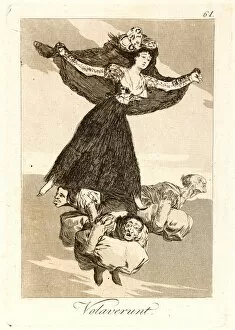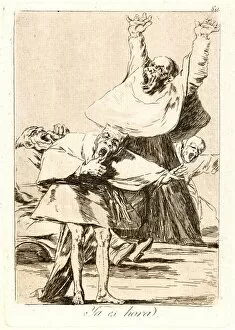215 Mm X 150 Mm 846 Collection
"215 mm x 150 mm 846: Exploring the Enigmatic Works of Francisco de Goya" Step into the captivating world of Francisco de Goya
All Professionally Made to Order for Quick Shipping
"215 mm x 150 mm 846: Exploring the Enigmatic Works of Francisco de Goya" Step into the captivating world of Francisco de Goya, a renowned Spanish artist from the 18th century. His collection of masterpieces includes thought-provoking pieces such as "Que pico de Oro. (What a golden beak. )" and "Volaverunt. (They have flown. )", both created between 1796-1797. Intrigue fills the canvas as we encounter "El Vergonzoso. (The shamefaced one. )" and "Hasta la muerte. (Until death. )", where Goya's brushstrokes convey deep emotions and hidden stories. Goya's ability to evoke strong reactions continues with "Que se la llevaron. (They carried her off)", leaving us pondering what events led to this dramatic scene. Inquisitiveness arises in his work titled "Si sabra mas el discipulo? (Might not the)", inviting us to question our own knowledge. As we delve further, we discover another rendition of "Que se la llevaron. (They carried her off)" alongside other intriguing works like "Ya es hora" and "Nadie nos ha visto. (No one has seen us. )". Each piece seems to whisper secrets waiting to be unraveled. Goya's artistry also explores societal dynamics through pieces like "Despacha, que dispiertan" and "Unos a otros. (What one does to another. )". These paintings provoke contemplation about human behavior and its consequences. Finally, Goya challenges conventionality with his bold statement in “No grites, tonta. ” (Don't scream, stupid), urging viewers to question societal norms that restrict individual expression. With each stroke of his brush, Francisco de Goya invites us on an enigmatic journey through time and emotion.








